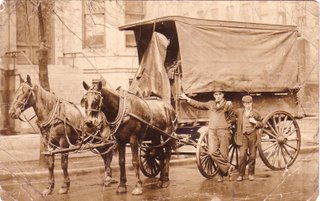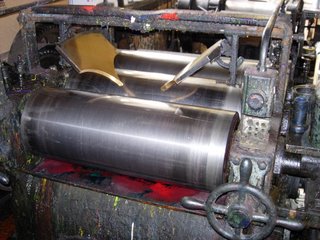PRICING AND HAZMAT

I had a couple of interesting conversations the other day that started me to thinking about pricing of our materials. The first was with a customer who was certain that another supplier's product was a higher grade than ours because they charged a hazardous materials charge for the product and we didn't charge for hazmat. The second conversation was with a good friend and customer for over thirty years who commented on the selling price of our Graphic Heavyweight paper. He said that he'd never tried it because of the pricing - it was too inexpensive to be as good as some of the other papers we carry.
I have long contended that the Graphic H/W was the best selling unknown paper around. In the average year, we sell between 40-50,000 sheets of this wonderful sheet. Why is it so inexpensive? The answer is very simple .....we have it made for us (currently in the U.K.). There are no middle men in the transaction, and as we do with every product we sell, we pass the savings along to you. Every single time that we have had to raise the price on this paper, sales shoot up! Graphic H/W was actually the brainchild of two printmakers, back in the 1920's.
F. Leslie Thompson was an noted aquatint artist, and long time secretary of the Chicago Society of Etchers. Ernie Melchert was a printmaker who worked for a paper company. In a late night bull session, the two of them talked about the mythical perfect paper (admittedly it was perfect for the way they worked!). Melchert supposedly decreed, after all of the qualities they wanted had been discussed, that such a paper could be made. The two of them had the paper made, and began selling it to their fellow printmakers.
In the early 1950's, Thompson approached my father about the possibility of Graphic Chemical handling the paper with the proviso that we keep in affordable for printmakers. We have lived up to that provision to this day. Originally the paper was 65% rag with a neutral pH. We changed the rag content about 25 years ago to 100% rag, but the pH remains neutral...a critical element for archival quality. If you haven't tried it, you could be in for a treat.
Now, the hazmat issue. Graphic Chemical & Ink Company takes very seriously its obligations for transporting hazardous materials. Unlike many in this industry, we have several employees certified in hazardous materials documentation and regulations. We know how to package, document and ship these materials better than almost anyone in the industry. Our goal is to insure that not only does our customer get their package in one piece, as fast as possible, but also as inexpensively as possible. If we don't have to charge for hazardous materials, we're not going to. It has nothing to do with the quality of the product. So, you can buy from them and pay more for the product and more for shipping, or buy from us and get it faster and cheaper....your call.



